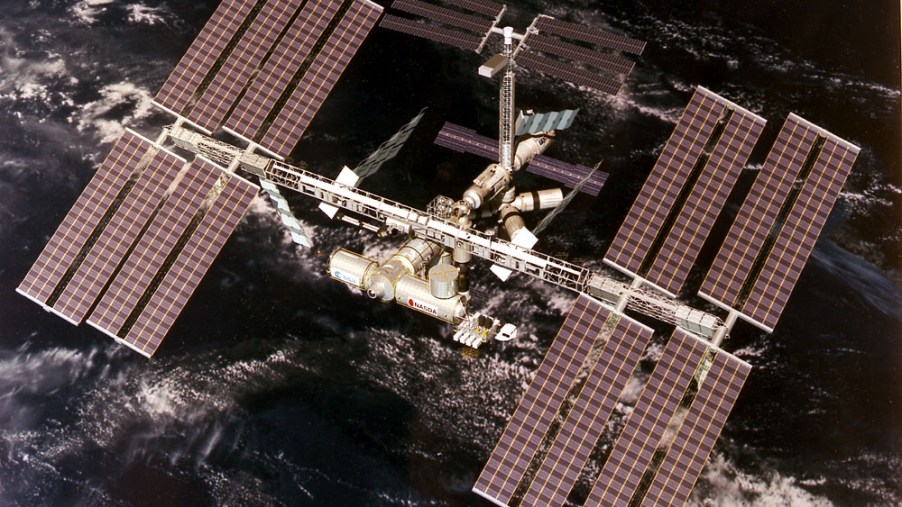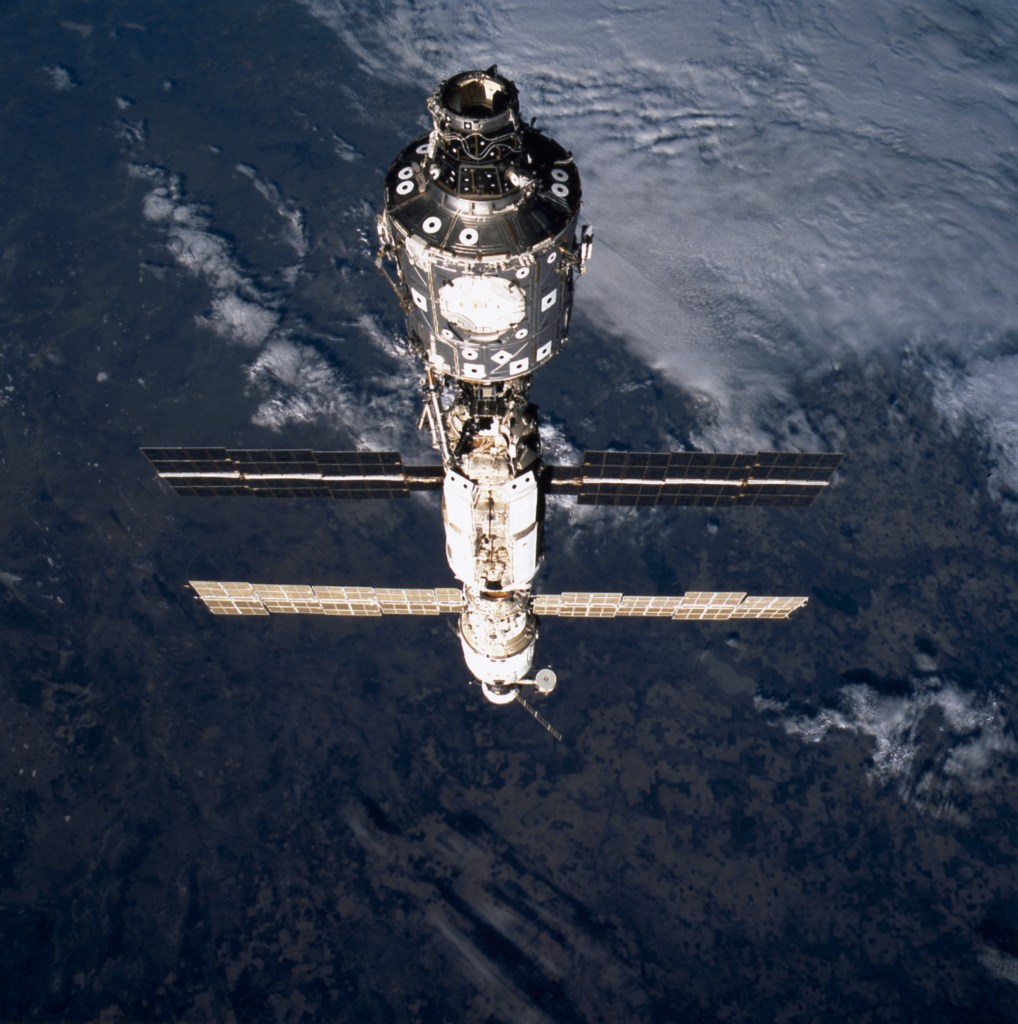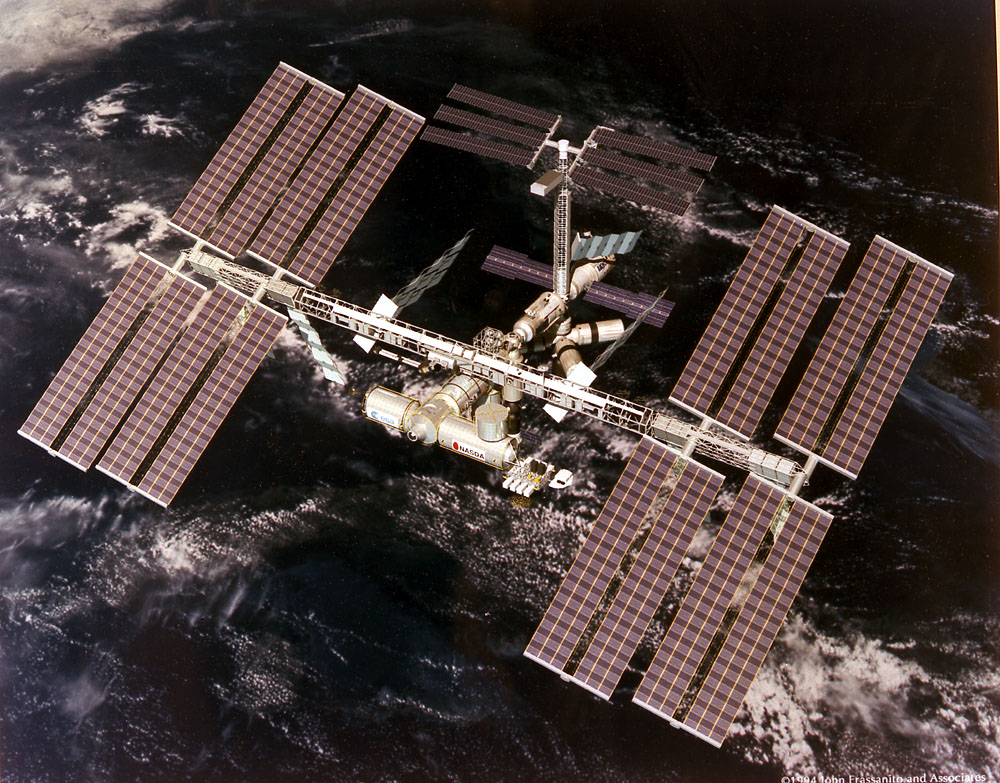
Did You Know the International Space Station Can Move?
To the average Joe, the International Space Station looks like an incredibly complex piece of space junk whizzing around the earth. Obviously, it’s not a piece of junk, and it can actually move. There’s fuel for thrusters and ways to orient the craft in orbit. But how does the ISS move, and when would it have to?

The International Space Station is mainly powered by Russian Thrusters
Technically speaking, the International Space Station is moving all the time. Not only is it in orbit, moving at 17,000 mph, but there are onboard gyroscopes constantly positioning it. Otherwise, the space station would spin around recklessly and, eventually, fall back to earth.
But when the space station needs to be moved, it’s primarily powered by Russian-built rocket thrusters. The main thrusters of the ISS are located on the Zvezda module, which was attached to the ISS in 2000. Not only was it the first large module attached to the station, but it was the first fully Russian contribution.
The Zvezda module is used primarily for service, able to support six crew members at a time, with two sleeping quarters, a toilet, a treadmill, and a bicycle for exercise. However, when the station needs a boost, the Zvezda’s rockets kick in.
With 16 small thrusters and two large thrusters, the Zvezda’s modules can boost the space station’s orbit when need be. But there are other Russian modules that dock with the space station every so often. They’re called the Progress spacecrafts, and can both propel and refuel the ISS as needed.
Entirely unmanned, these Russian cargo capsules carry 3,836 lbs of fuel, whereas the Zvezda module can only hold 1,895 lbs. Provided, but the time the Progress gets to the station, it only has about 400 or 500 lbs of fuel left. Once the module is finished at the station, it’s filled with trash and waste, undocked, and then burns up upon reentry.
So the International Space Station has means of propelling itself, but those rockets are only fired when they have to be.
The thrusters are only activated when absolutely necessary

For starters, while careful calculations are made to make sure docking vessels intercept the space station, they aren’t always perfect. Thrusters are used to raise the space station’s orbit to meet with oncoming ships. This is rather common, and the time it takes to burn isn’t typically long. But orbital boosts aren’t the only times the space station needs to move around.
Space junk is becoming a dangerous problem, scattering itself in orbit. And while the International Space Station was designed to take on debris the size of a pea, there’s a lot of junk larger than that. If a potential impact is detected inside the station’s “pizza box,” a 30 mile long, 30 mile wide, and 2.5 mile deep rectangle, the station can react. Though it’s best to wait to the last minute before making a move, or not make one at all.
NASA explains that moving the space station can put the crew at risk even more. Since being launched in 1999, the ISS has only made 29 collision avoidance maneuvers. And if the odds of collision are 1 in 10,000 according to all the control centers and tracking stations on earth, a maneuver may be performed. Those sound like small odds, but those aren’t odds you want to chance with a vessel worth over $100 billion.
The International Space Station is two decades’ worth of research and collaboration. And while it might just look like a big junk of metal in the night sky, it’s the culmination of international teamwork. The American’s got it up in the sky, and the Russians keep it moving.


